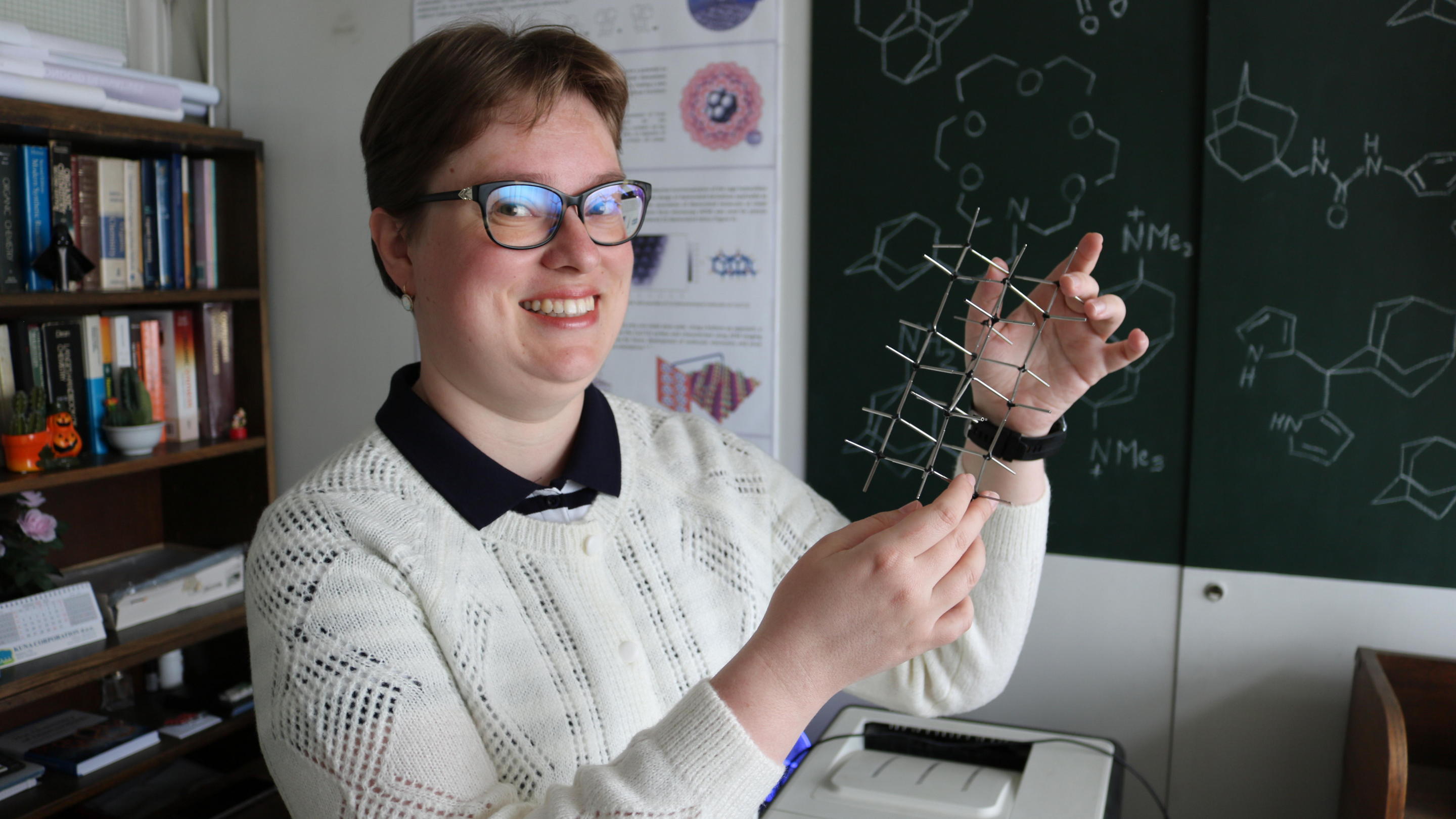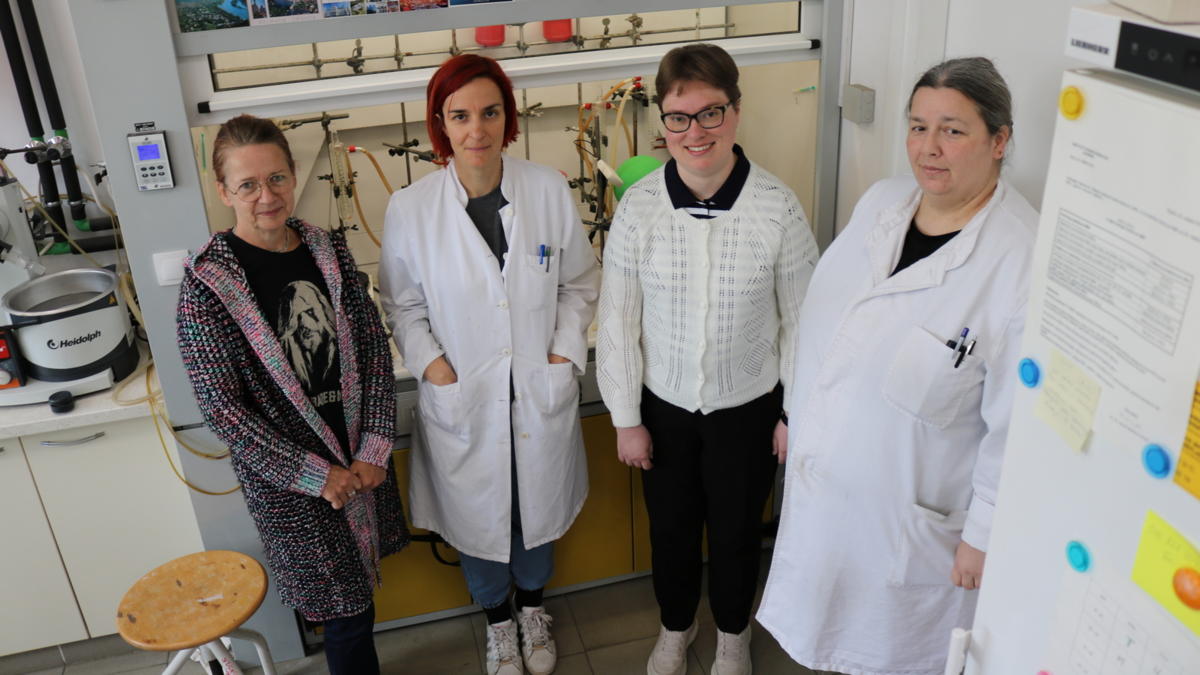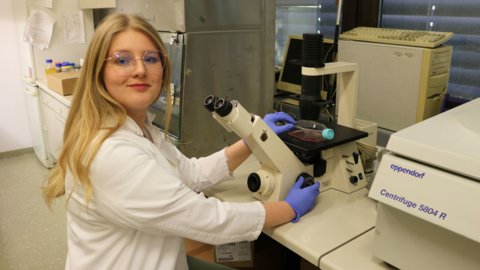Why should you care about molecules that look like tiny diamonds? Meet Croatian chemist Dr. Marina Šekutor, whose research could help shape the technologies of tomorrow. For her outstanding work, Marina was recently awarded the City of Zagreb Award.
At the Ruđer Bošković Institute, Dr. Šekutor leads a team in the Polycyclic Chemistry Group working on what might sound like something out of science fiction: creating and studying molecules so small you can’t even see them under a standard microscope—but so extraordinary that one day they could store energy, deliver medicine, or form the building blocks of next-generation materials.
Marina’s journey into science began as a chemistry student in Zagreb. Even then, she was drawn to unusual molecules—not the flat, two-dimensional structures you see in textbooks, but rather three-dimensional, solid, perfectly symmetrical ones. After graduating in 2008, she joined the Ruđer Bošković Institute and earned her PhD in 2013 under the mentorship of Prof. Kata Majerski, researching adamantane derivatives—molecules already known for their diamond-like strength and symmetry.
Her fascination with molecular stability and spatial precision led her to Germany, where she spent two years as a Humboldt Fellow in the lab of world-renowned chemist Prof. Peter R. Schreiner. There, she immersed herself in the world of diamondoids—carbon-based molecular cages that resemble miniature diamonds, small enough to fit millions on the head of a pin.
Molecules That Do the Work Themselves
When asked to describe her research, Marina puts it simply: “We study molecules that act like nano-sized building blocks.” Specifically, her focus is on diamondoids—stable, symmetrical carbon structures that resemble microscopic diamond cages.
But what truly sets diamondoids apart isn’t just their atomic beauty—it’s their versatility. These molecules can be chemically customized, much like LEGO bricks, with each new functional group adding a new ability: sticking to specific surfaces, recognizing other molecules, or transferring energy and information.
This potential for “programming” molecules to behave in specific ways could make them the keys to unlocking future technologies.
Today, Marina leads her own research group at the IRB, where she explores how these molecular structures can be used to create smart, responsive materials. Her idea is both elegant and ambitious: if we can precisely predict how molecules behave and interact, we can guide them to assemble themselves into desired structures—such as forming an organized layer on a surface to store energy.
Some of the compounds her group is developing could be used in energy storage; others may carry great promise in medicine, serving as drug carriers that know exactly where in the body they need to go.
The idea that molecules can self-organize, recognize targets, and respond to their environment was once a scientific dream. Today, thanks to researchers like Šekutor, it’s becoming a technical reality.
From the Lab to Recognition
For her work in this field, Marina received the prestigious City of Zagreb Award.
“This award is a tremendous honor and a recognition of the years of dedication and effort we’ve put into our research,” she says. “It validates the importance of what we’re doing and gives us even more motivation to tackle new challenges in the chemistry of these fascinating molecules. I’m especially happy that it helps raise awareness of diamondoids in Croatia and highlights their potential—not just for understanding the fundamentals of matter, but for real-world applications.”
In addition to her research, the award also acknowledges her recent monograph on diamondoids, written in collaboration with two leading global authorities in the field. The book, The Chemistry of Diamondoids: Building Blocks for Ligands, Catalysts, Materials, and Pharmaceuticals (2024, Wiley-VCH), is the most comprehensive resource to date.
“The book consolidates everything we currently know about these molecules,” Marina explains. “It covers their natural occurrence, synthetic preparation, and a wide range of applications in supramolecular chemistry, catalysis, pharmacology, materials science, and nanotechnology.”
Science Without the Spotlight
Alongside writing papers and running her lab, Marina lectures at universities in Zagreb and Osijek, collaborates with colleagues across Europe, and actively participates in research networks that connect young researchers, experienced scientists, and industry partners.
She sees science as a space of synergy—between fundamental and applied research, between local and international collaboration, between curiosity and knowledge.
Despite all her achievements, Marina remains a grounded and humble scientist who still learns something new in the lab every day. Her message to students considering a career in science is clear: don’t give up when things get tough.
“Science isn’t always glamorous,” she says. “Experiments often fail. But even when things don’t go as planned, we learn a lot. That mindset has helped me through many research challenges.”
dr. sc. Marina ŠekutorHer advice to chemistry students? “Don’t stop following your curiosity, and don’t get discouraged if experiments don’t succeed on the first try. Organic synthesis demands patience and persistence—nature loves surprises. But in those surprises lie opportunities for deeper understanding and real-world innovation.
She also adds that working at the IRB gives her what matters most in science: the freedom to explore new ideas, well-equipped labs, and an inspiring research environment.
“At our institute, I have the chance to work with enthusiastic colleagues on interdisciplinary topics. The institutional support, access to equipment, and research infrastructure make scientific work much more manageable,” she says.
From Abstract to Everyday
In the end, Marina Šekutor’s story reminds us why fundamental science matters. In a world that often craves quick results, it’s easy to overlook the importance of research that doesn’t have immediate applications.
But behind every future material or revolutionary medicine lie years of dedication to solving abstract, seemingly distant problems.
What sounds like science fiction today—molecules invisible to the naked eye that can store energy or deliver drugs—could, thanks to the persistence of scientists like Marina, become an everyday reality tomorrow.





